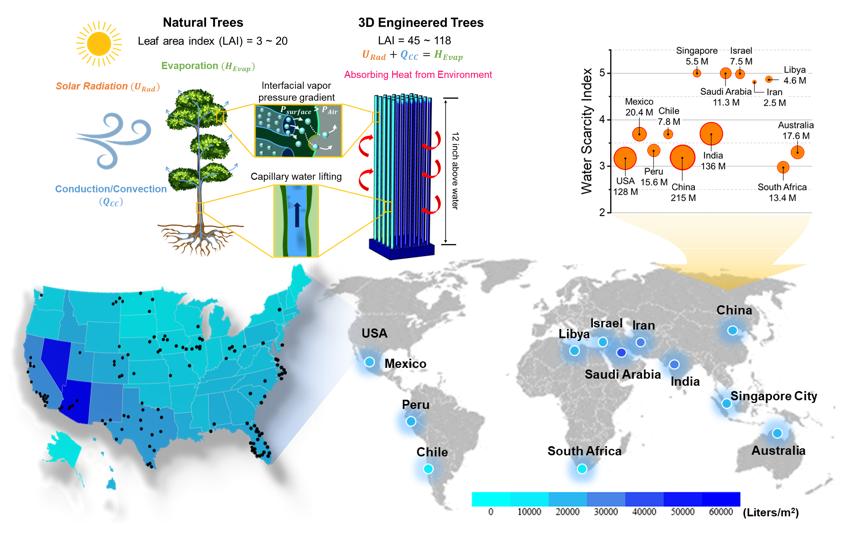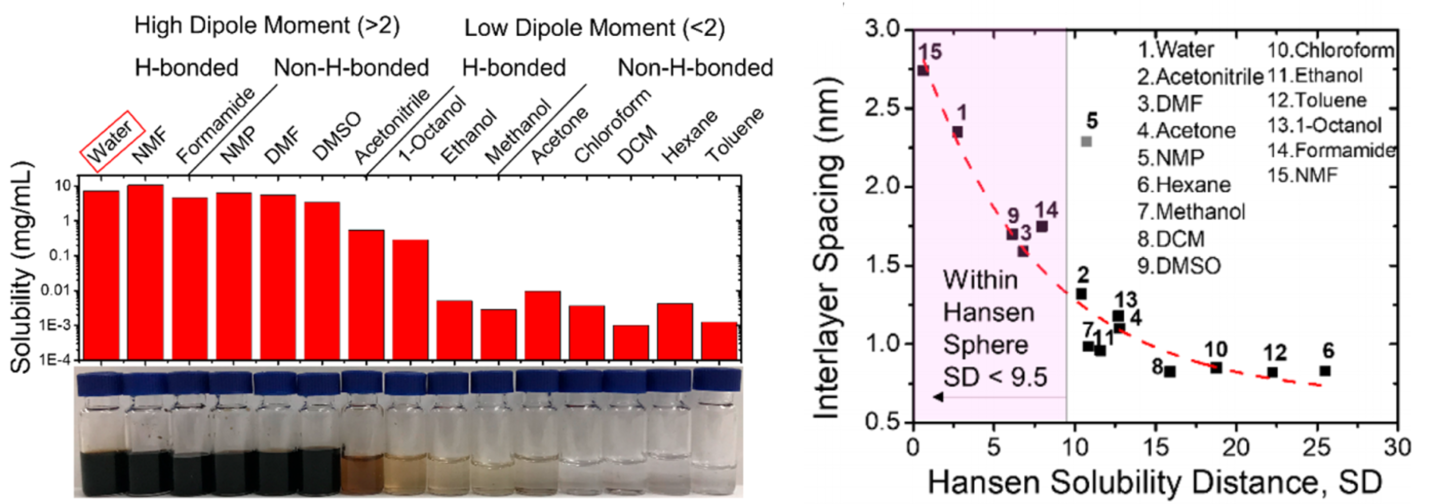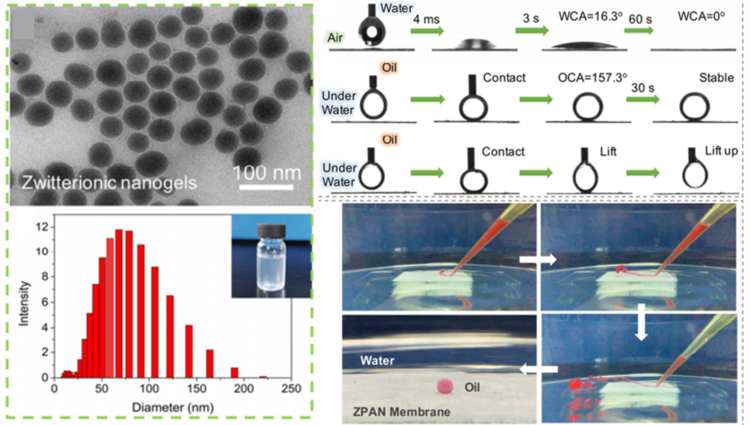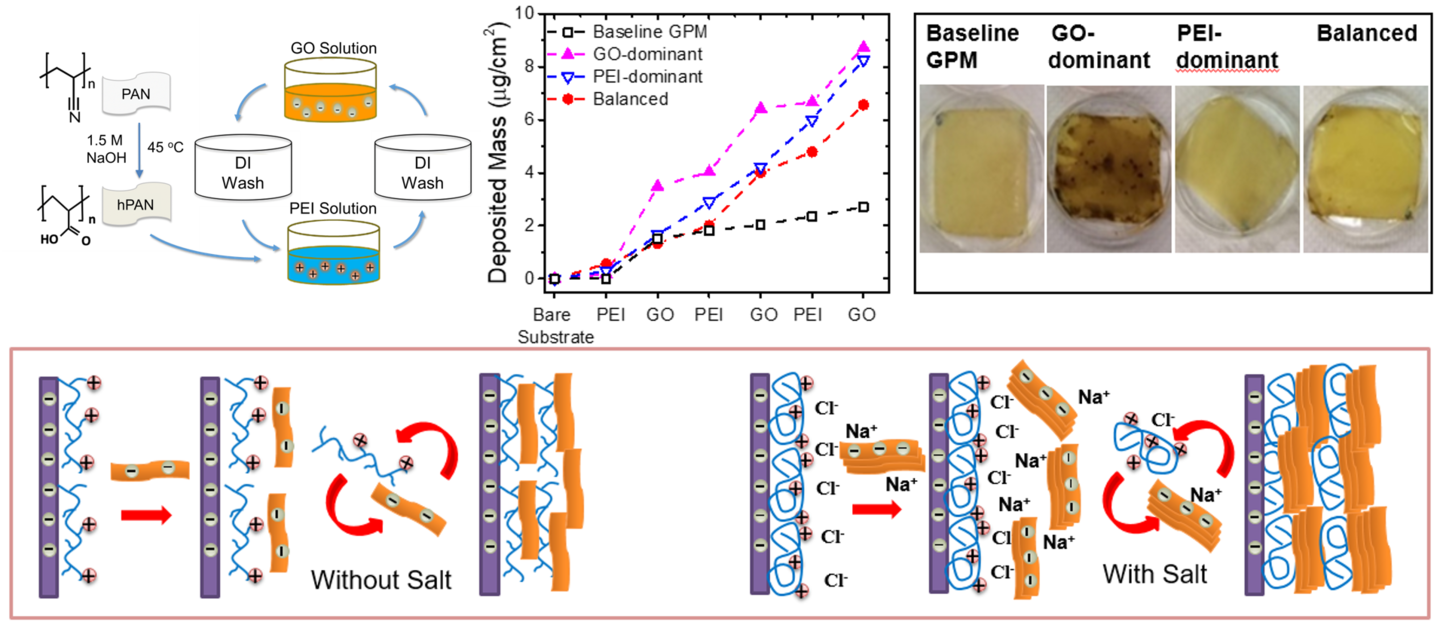Upscaling 3D Engineered Trees for Off-Grid Desalination
More than 70% of the population without access to safe drinking water lives in remote and off-grid areas. Inspired by natural plant transpiration, we designed and tested in this study an array of scalable three-dimensional (3D) engineered trees made of natural wood for continuous water desalination to provide affordable and clean drinking water. This process overcame some major challenges of popular solar-driven water evaporation and water harvesting, such as intermittent operation, low water production rate, and system scaling. The trade-off between energy transfer and system footprint was tackled by optimizing the interspacing between the trees. The scaled system has a ratio of surface area (vapor generation) to project area (water transport) up to 118, significantly higher than the prevailing flat-sheet design. The extensive surface area evaporated water at a temperature cooler than the surrounding air, drawing on multiple environmental energy sources including solar, wind, or ambient heat in the air and realized continuous operation. The total energy for evaporation reached over 300% of the one-sun irradiance, enabling a freshwater production rate of 4.8 L m–2 h–1 from an array of 16 trees in an enclosed room and 14 L m–2 h–1 under a 3 m/s airflow. Furthermore, we found that the ambient heat in the air contributed 60%–70% of the total latent heat of vaporization when energy sources were decoupled. During long-term desalination tests, the engineered trees demonstrated a self-cleaning mechanism with daily cycles of salt accumulation and dissolution. Combining the quantification from an evaporation model and meteorology data covering the globe, we also demonstrated that the 3D engineered trees can be of particular interest for sustainable desalination in the Middle East and North Africa (MENA) regions.See our recent ES&T publication.

Correlating Interlayer Spacing and Separation Capability of Graphene Oxide Membranes in Organic Solvents
Membranes synthesized by stacking two-dimensional graphene oxide (GO) hold great promise for applications in organic solvent nanofiltration. However, the performance of a layer-stacked GO membrane in organic solvent nanofiltration can be significantly affected by its swelling and interlayer spacing, which have not been systematically characterized. In this study, the interlayer spacing of the layer-stacked GO membrane in different organic solvents was experimentally characterized by liquid-phase ellipsometry. To understand the swelling mechanism, the solubility parameters of GO were experimentally determined and used to mathematically predict the Hansen solubility distance between GO and solvents, which is found to be a good predictor for GO swelling and interlayer spacing. Solvents with a small solubility distance (e.g., dimethylformamide, N-methyl-2-pyrrolidone) tend to cause significant GO swelling, resulting in an interlayer spacing of up to 2.7 nm. Solvents with a solubility distance larger than 9.5 (e.g., ethanol, acetone, hexane, and toluene) only cause minor swelling and are thus able to maintain an interlayer spacing of around 1 nm. Correspondingly, GO membranes in solvents with a large solubility distance exhibit good separation performance, for example, rejection of more than 90% of the small organic dye molecules (e.g., rhodamine B and methylene blue) in ethanol and acetone. Additionally, solvents with a large solubility distance result in a high slip velocity in GO channels and thus high solvent flux through the GO membrane. In summary, the GO membrane performs better in solvents that are unlike GO, i.e., solvents with large solubility distance. To find more, see our recent ACS Nano Article.

Zwitterionic nanogels modified nanofibrous membrane for efficient oil/water separation
Membrane fouling caused by surfactant-stabilized oil-in-water emulsions is a great challenge for oily water treatment. In this work, we fabricated a sulfobetaine-based zwitterionic nanogels modified polyacrylonitrile (ZPAN) nanofibrous membrane with superwetting surfaces. The zwitterionic nanogels were grafted on the surface of electrospun PAN nanofibers to construct hierarchical structure which can enhance surface roughness and antifouling performance of the membrane. The ZPAN membrane possesses superhydrophilic and underwater superoleophobic properties under a wide range of salt concentrations and pH values. Driven solely by gravity (applied pressure = 1 kPa), the ZPAN membrane can successfully separate oil and water emulsions. The oil content in the collected filtrates was below 20 ppm with a high separation efficiency of >99.6%, meanwhile, the permeation fluxes can reach 32800 L m−2 h−1 bar−1. Moreover, the ZPAN membrane exhibit strong mechanical property and stable reusability, indicating a great potential for efficient low-pressure-driven separation of oil-in-water emulsions. More details can be find in our JMS paper.

Graphene-polyelectrolyte multilayer membranes with tunable structure and internal charge
One great advantage of graphene-polyelectrolyte multilayer (GPM) membranes is their tunable structure and internal charge for improved separation performance. In this study, we synthesized GO-dominant GPM membrane with internal negatively-charged domains, polyethyleneimine (PEI)-dominant GPM membrane with internal positively-charged domains and charge-balanced dense/loose GPM membranes by simply adjusting the ionic strength and pH of the GO and PEI solutions used in layer-by-layer membrane synthesis. A combined system of quartz crystal microbalance with dissipation (QCM-D) and ellipsometry was used to analyze the mass deposition, film thickness, and layer density of the GPM membranes. The performance of the GPM membranes were compared in terms of both permeability and selectivity to determine the optimal membrane structure and synthesis strategy. One effective strategy to improve the GPM membrane permeability-selectivity tradeoff is to assemble charge-balanced dense membranes under weak electrostatic interactions. This balanced membrane exhibits the highest MgCl2 selectivity (∼86%). Another effective strategy for improved cation removal is to create PEI-dominant membranes that provide internal positively-charged barrier to enhance cation selectivity without sacrificing water permeability. These findings shine lights on the development of a systematic approach to push the boundary of permeability-selectivity tradeoff for GPM membranes. See our recent Cabon publication.


